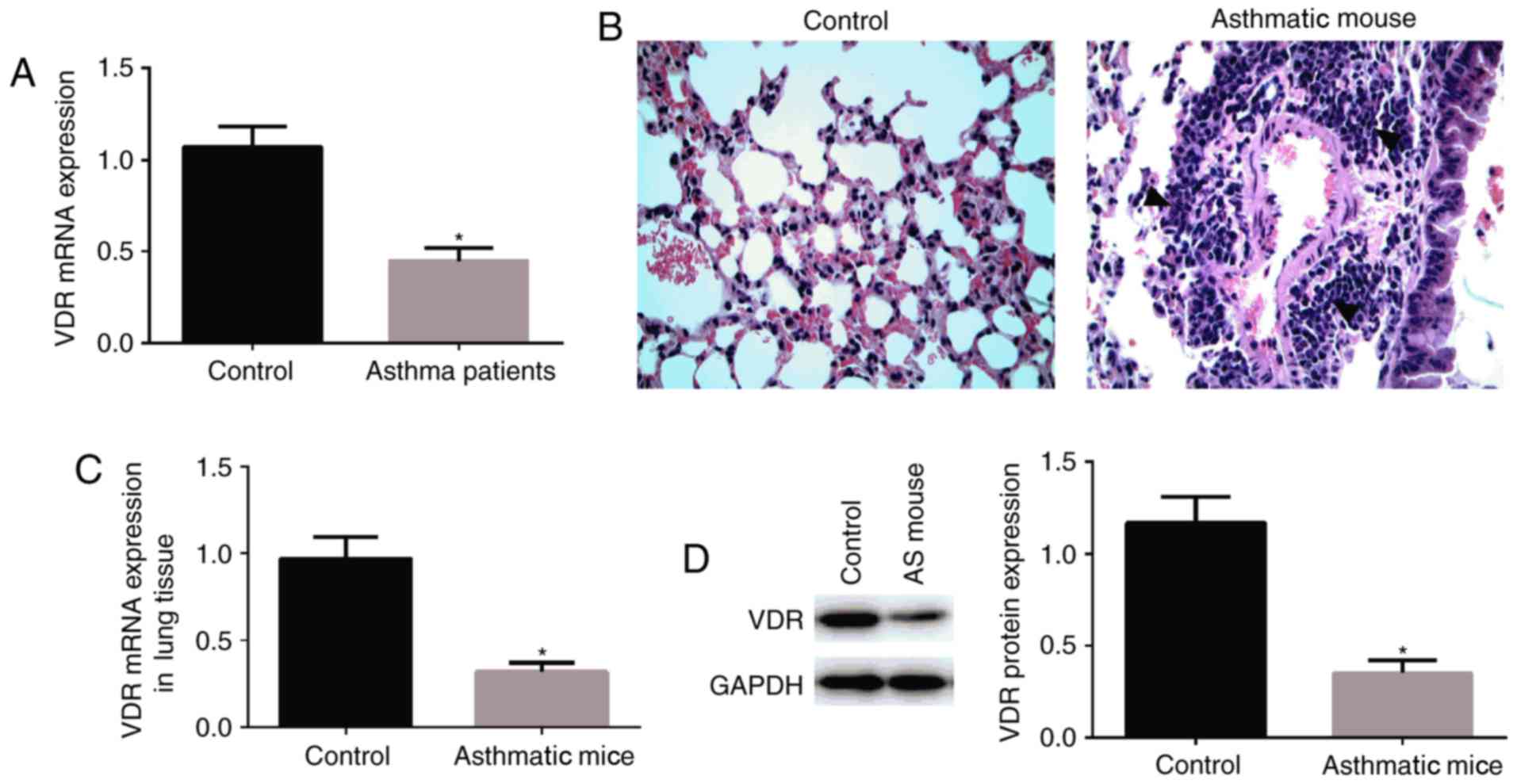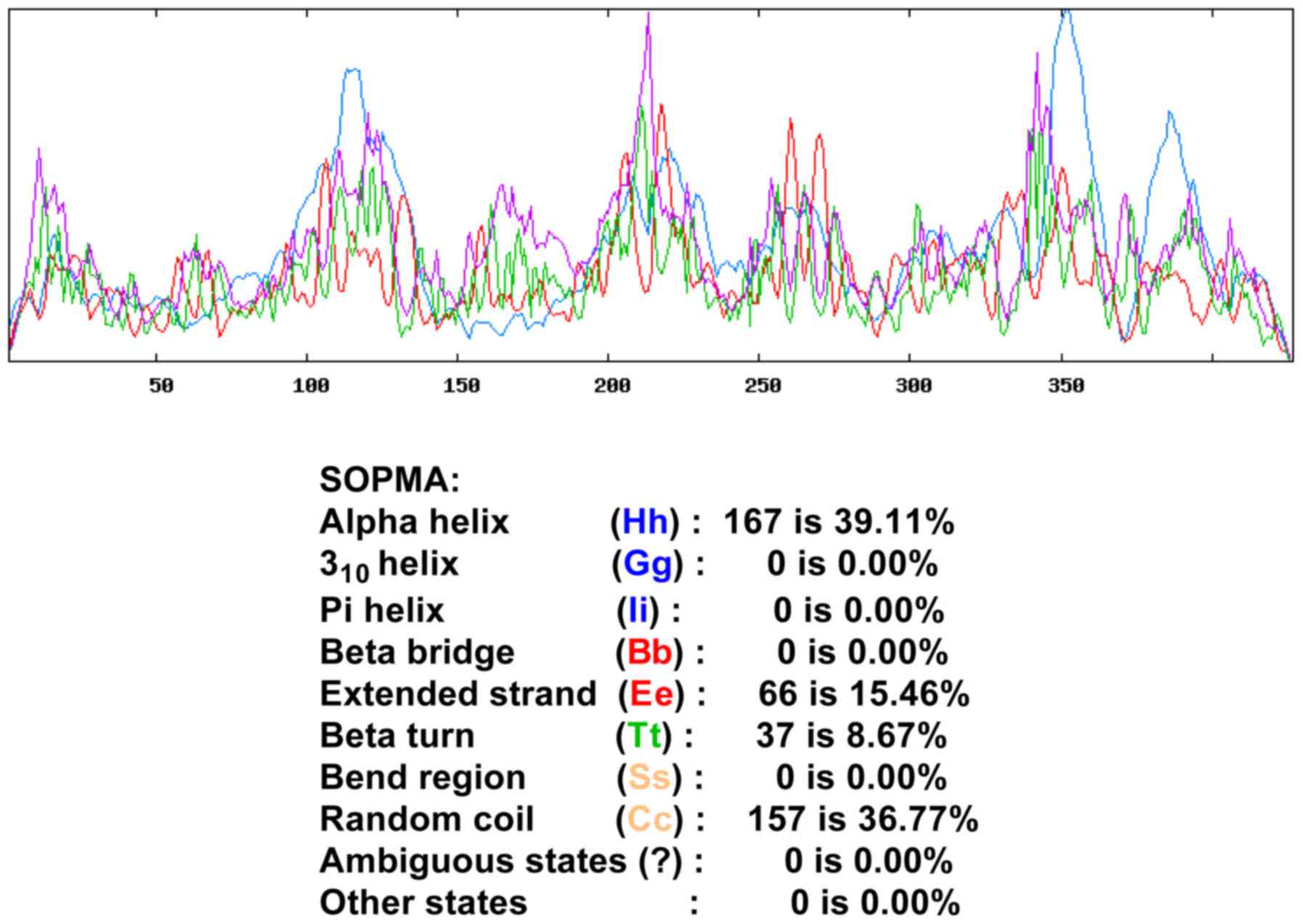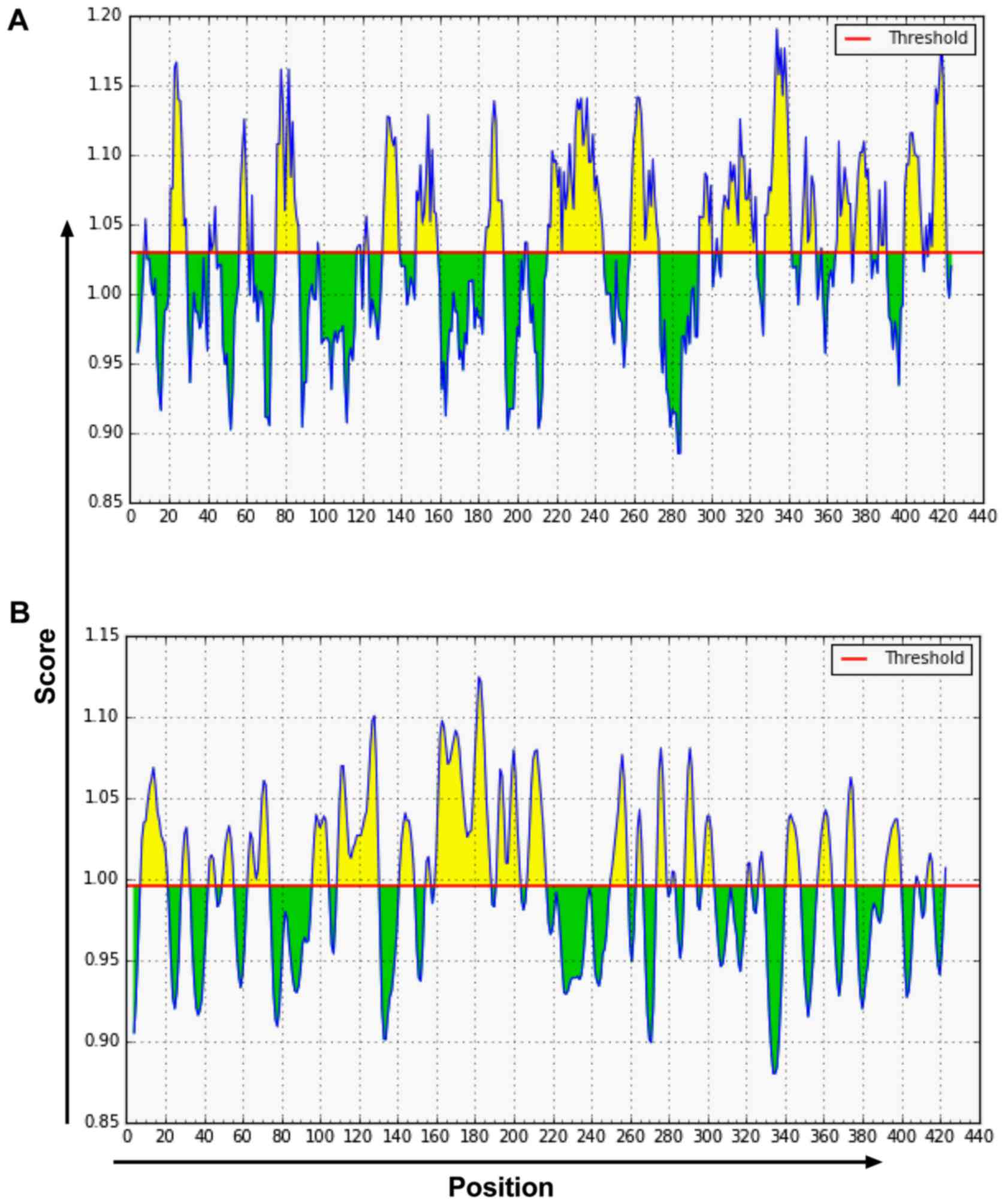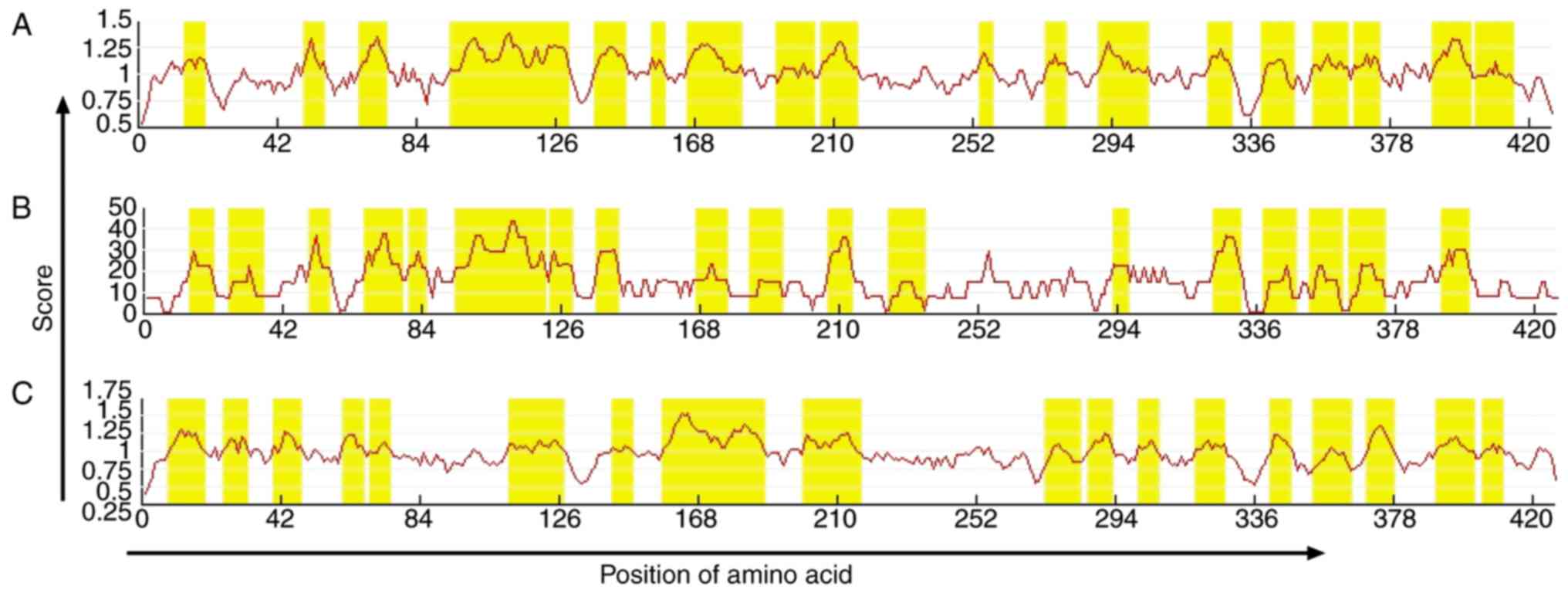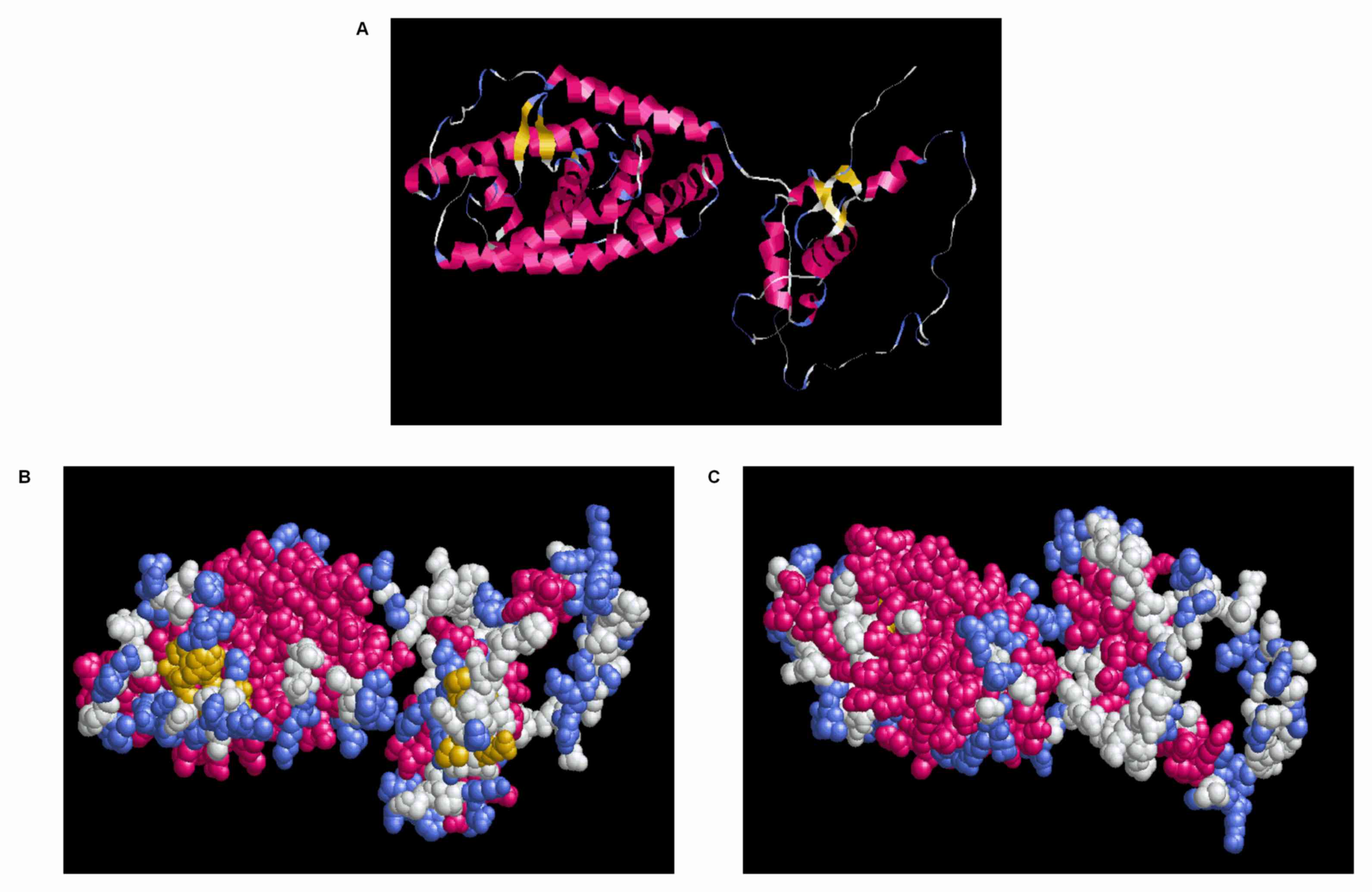|
1
|
Vora AC: Bronchial asthma. J Assoc
Physicians India. 62 3 Suppl:S5–S6. 2014.
|
|
2
|
Zhou X and Hong J: Pediatric asthma
management in china: Current and future challenges. Paediatr Drugs.
20:105–110. 2018. View Article : Google Scholar : PubMed/NCBI
|
|
3
|
Kay AB: Mediators of hypersensitivity and
inflammatory cells in the pathogenesis of bronchial asthma. Eur J
Respir Dis Suppl. 129:1–44. 1983.PubMed/NCBI
|
|
4
|
Kuna P: Contemporary views on the
pathological mechanism of asthma. Pol Merkur Lekarski. 14:519–521.
2003.(In Polish). PubMed/NCBI
|
|
5
|
Carr TF and Peters AT: Chapter 12: Asthma:
Principles of treatment. Allergy Asthma Proc. 33 Suppl 1:S39–S43.
2012. View Article : Google Scholar
|
|
6
|
Tang SP, Liu YL, Wang SB, Weng SF, Chen S,
Zhang MJ, Dong L, Guo YH, Lin DR, Hua YH and Wang DY: Trends in
prevalence and risk factors of childhood asthma in Fuzhou, a city
in Southeastern China. J Asthma. 52:10–15. 2015. View Article : Google Scholar : PubMed/NCBI
|
|
7
|
Huang H, Porpodis K, Zarogoulidis P,
Domvri K, Giouleka P, Papaiwannou A, Primikyri S, Mylonaki E,
Spyratos D, Hohenforst-Schmidt W, et al: Vitamin D in asthma and
future perspectives. Drug Des Devel Ther. 7:1003–1013.
2013.PubMed/NCBI
|
|
8
|
Anderson PH, Turner AG and Morris HA:
Vitamin D actions to regulate calcium and skeletal homeostasis.
Clin Biochem. 45:880–886. 2012. View Article : Google Scholar : PubMed/NCBI
|
|
9
|
Myszka M and Klinger M: The
immunomodulatory role of Vitamin D. Postepy Hig Med Dosw (Online).
68:865–878. 2014.(In Polish). View Article : Google Scholar : PubMed/NCBI
|
|
10
|
Iruretagoyena M, Hirigoyen D, Naves R and
Burgos PI: Immune response modulation by vitamin D: Role in
systemic lupus erythematosus. Front Immunol. 6:5132015. View Article : Google Scholar : PubMed/NCBI
|
|
11
|
Mann EH, Chambers ES, Pfeffer PE and
Hawrylowicz CM: Immunoregulatory mechanisms of vitamin D relevant
to respiratory health and asthma. Ann N Y Acad Sci. 1317:57–69.
2014. View Article : Google Scholar : PubMed/NCBI
|
|
12
|
Karagün E, Ergin C, Baysak S, Erden G,
Aktaş H and Ekiz Ö: The role of serum vitamin D levels in vitiligo.
Postepy Dermatol Alergol. 33:300–302. 2016. View Article : Google Scholar : PubMed/NCBI
|
|
13
|
Abelha-Aleixo J, Fonseca R, Bernardo A,
Mariz E and Costa L: Vitamin D - immunomodulatory actions and new
potentialities. Acta Reumatol Port. 39:355–356. 2014.PubMed/NCBI
|
|
14
|
Belorusova AY and Rochel N: Structural
studies of vitamin D nuclear receptor ligand-binding properties.
Vitam Horm. 100:83–116. 2016. View Article : Google Scholar : PubMed/NCBI
|
|
15
|
Duan Y, Learoyd J, Meliton AY, Clay BS,
Leff AR and Zhu X: Inhibition of Pyk2 blocks airway inflammation
and hyperresponsiveness in a mouse model of asthma. Am J Respir
Cell Mol Biol. 42:491–497. 2010. View Article : Google Scholar : PubMed/NCBI
|
|
16
|
Wass MN, Kelley LA and Sternberg MJ:
3DLigandSite: Predicting ligand-binding sites using similar
structures. Nucleic Acids Res. 38:(Web Server Issue). W469–W473.
2010. View Article : Google Scholar : PubMed/NCBI
|
|
17
|
Haspeslagh E, Debeuf N, Hammad H and
Lambrecht BN: Murine models of allergic asthma. Methods Mol Biol.
1559:121–136. 2017. View Article : Google Scholar : PubMed/NCBI
|
|
18
|
Balmasova IP, Sepiashvili RI, Sepiashvili
IaR and Malova ES: Bronchial asthma pathogenesis and genetic
prognosis development. Zh Mikrobiol Epidemiol Immunobiol. 3:60–67.
2014.(In Russian).
|
|
19
|
Cleary RA, Wang R, Wang T and Tang DD:
Role of Abl in airway hyperresponsiveness and airway remodeling.
Respir Res. 14:1052013. View Article : Google Scholar : PubMed/NCBI
|
|
20
|
Ladebauche P: Managing asthma: A growth
and development approach. Pediatr Nurs. 23:37–44. 1997.PubMed/NCBI
|
|
21
|
Tantisira KG, Litonjua AA, Weiss ST and
Fuhlbrigge AL: Childhood Asthma Management Program Research Group:
Association of body mass with pulmonary function in the Childhood
Asthma Management Program (CAMP). Thorax. 58:1036–1041. 2003.
View Article : Google Scholar : PubMed/NCBI
|
|
22
|
Grimfeld A, Just J and Bodart E: Role of
inhalation therapy in the management of childhood asthma. Rev Mal
Respir. 9:413–416. 1992.(In French). PubMed/NCBI
|
|
23
|
Taymans SE, Pack S, Pak E, Orban Z,
Barsony J, Zhuang Z and Stratakis CA: The human vitamin D receptor
gene (VDR) is localized to region 12cen-q12 by fluorescent in situ
hybridization and radiation hybrid mapping: Genetic and physical
VDR map. J Bone Miner Res. 14:1163–1166. 1999. View Article : Google Scholar : PubMed/NCBI
|
|
24
|
Poon AH, Gong L, Brasch-Andersen C,
Litonjua AA, Raby BA, Hamid Q, Laprise C, Weiss ST, Altman RB and
Klein TE: Very important pharmacogene summary for VDR.
Pharmacogenet Genomics. 22:758–763. 2012. View Article : Google Scholar : PubMed/NCBI
|
|
25
|
Bossé Y, Lemire M, Poon AH, Daley D, He
JQ, Sandford A, White JH, James AL, Musk AW, Palmer LJ, et al:
Asthma and genes encoding components of the vitamin D pathway.
Respir Res. 10:982009. View Article : Google Scholar : PubMed/NCBI
|
|
26
|
Wittke A, Chang A, Froicu M, Harandi OF,
Weaver V, August A, Paulson RF and Cantorna MT: Vitamin D receptor
expression by the lung micro-environment is required for maximal
induction of lung inflammation. Arch Biochem Biophys. 460:306–313.
2007. View Article : Google Scholar : PubMed/NCBI
|
|
27
|
Hruby S, Alvord EC Jr, Martenson RE,
Deibler GE, Hickey WF and Gonatas NK: Epitopes in myelin basic
protein reactive with monoclonal antibodies. Prog Clin Biol Res.
146:271–276. 1984.PubMed/NCBI
|
|
28
|
Ma X, Li P, Sun P, Bai X, Bao H, Lu Z, Fu
Y, Cao Y, Li D, Chen Y, et al: Construction and characterization of
3A-epitope-tagged foot-and-mouth disease virus. Infect Genet Evol.
31:17–24. 2015. View Article : Google Scholar : PubMed/NCBI
|
|
29
|
Augustin T, Cehlar O, Skrabana R, Majerova
P and Hanes J: Unravelling viral camouflage: Approaches to the
study and characterization of conformational epitopes. Acta Virol.
59:103–116. 2015. View Article : Google Scholar : PubMed/NCBI
|
|
30
|
Forsström B, Axnäs BB, Rockberg J,
Danielsson H, Bohlin A and Uhlen M: Dissecting antibodies with
regards to linear and conformational epitopes. PLoS One.
10:e01216732015. View Article : Google Scholar : PubMed/NCBI
|
|
31
|
Pinilla C, Appel JR, Judkowski V and
Houghten RA: Identification of B cell and T cell epitopes using
synthetic peptide combinatorial libraries. Curr Protoc Immunol
Chapter. 9:Unit9.5. 2012. View Article : Google Scholar
|
|
32
|
Amin MR, Siddiqui MS, Ahmed D, Ahmed F and
Hossain A: B- and T-cell epitope mapping of human sapovirus capsid
protein: an immunomics approach. Int J Bioinform Res Appl.
7:287–298. 2011. View Article : Google Scholar : PubMed/NCBI
|
|
33
|
Lin X, Chen Y and Yan J: Recombinant
multiepitope protein for diagnosis of leptospirosis. Clin Vaccine
Immunol. 15:1711–1714. 2008. View Article : Google Scholar : PubMed/NCBI
|
|
34
|
Mahajan B, Berzofsky JA, Boykins RA, Majam
V, Zheng H, Chattopadhyay R, de la Vega P, Moch JK, Haynes JD,
Belyakov IM, et al: Multiple antigen peptide vaccines against
Plasmodium falciparum malaria. Infect Immun. 78:4613–4624. 2010.
View Article : Google Scholar : PubMed/NCBI
|



